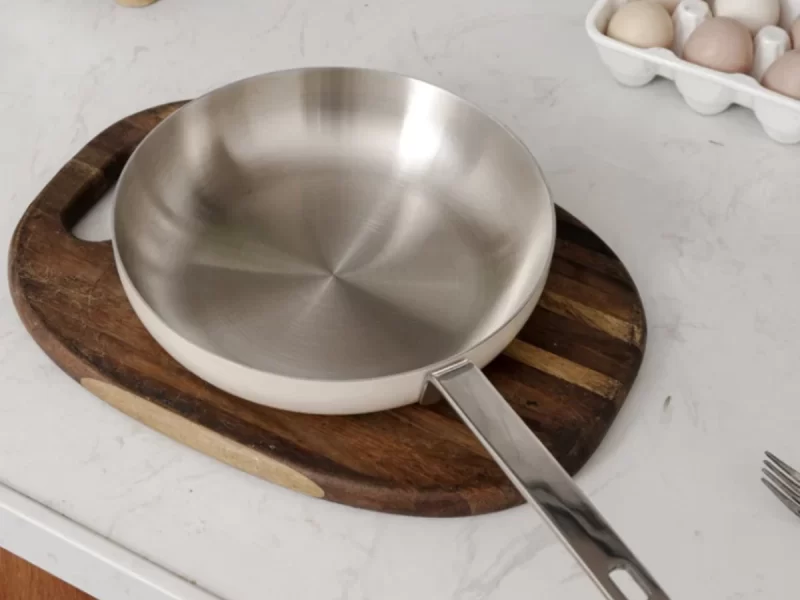
For the powerful performance, stainless steel cookware is popular; yet, many people often meet the problem of sticking when using a stainless steel pan, which makes them disappointed with the performance of the stainless steel pans. Actually, as long as you master some correct usage skills, the stainless steel pan can bring a high-quality cooking experience to you, too. As an wholesale cookware manufacturer and expert, I will introduce several simple and effective usage methods to you that will help you avoid sticking.
Is Stainless Steel Cookware Non Stick?
Although stainless steel pans are not prone to sticking, they may stick if used improperly. The main reasons why your stainless steel frying pans are prone to sticking may include the following:
Insufficient temperature control: Stainless steel pans have excellent thermal conductivity, but due to the characteristics of the material, the heat distribution may not be as uniform as some non-stick pans, which can easily cause local overheating or overcooling.
The pan surface has not reached the “non-stick point”: When the ingredients directly contact the cold or overheated pan surface, chemical reactions or physical adsorption are likely to occur, resulting in adhesion.
Insufficient cooking oil: The surface of the stainless steel pan is not a coating structure, and it depends on the combined action of oil and temperature to form a natural non-stick effect.
After understanding these principles, you can adjust your usage accordingly to make the best use of stainless steel cookware.

How To Make Your Stainless Steel Pan Non Stick
Preheating the stainless steel pan
Before using a stainless steel pan, the correct preheating steps are key. Follow the following method:
1.Heat the pan over medium heat for 1-2 minutes, avoiding sudden high temperatures.
2.Check if the pan has reached the appropriate temperature: drop a few drops of water to the bottom of the pan. If the water drops roll into a “water ball” and evaporate quickly, it means the pan has been preheated.
Use the right amount of oil
1. After the pan is preheated to the appropriate temperature, add the right amount of cooking oil and rotate the pan to evenly cover the bottom of the pan.
2. Let the oil heat slightly until it smokes slightly, but do not overheat to avoid the decomposition of the oil.
Master the timing of adding ingredients
1.Avoid adding ingredients when the oil is not fully heated, otherwise it is easy to stick to the pan.
2.The surface of the ingredients needs to be kept dry, especially meat. Excessive moisture will lower the pan temperature and cause sticking problems.
3.Gently put the ingredients into the pan, avoid frequent flipping, and let it “lock” the shell on the surface of the pan before stir-frying.
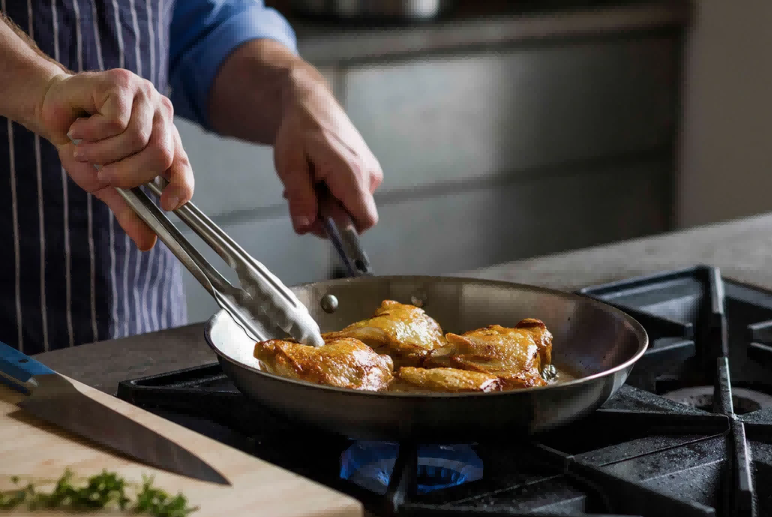
How To Avoid Different Ingredients From Sticking To The Pan
Cooking eggs
It is a common problem that eggs stick to the pan easily. When frying eggs, first preheat the pan and apply a small amount of oil, then adjust to low heat, gently pour in the egg liquid, and wait patiently for the surface to solidify before turning it over.
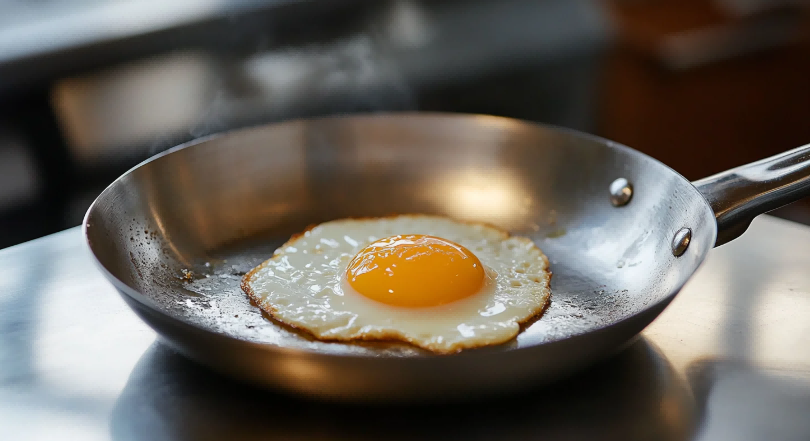
Frying meat
When frying steaks or fish, don’t rush to turn them over. When the meat is in contact with the pan for a period of time, it will naturally separate from the surface. At this time, turning it over will not easily break and can form a perfect brown color.
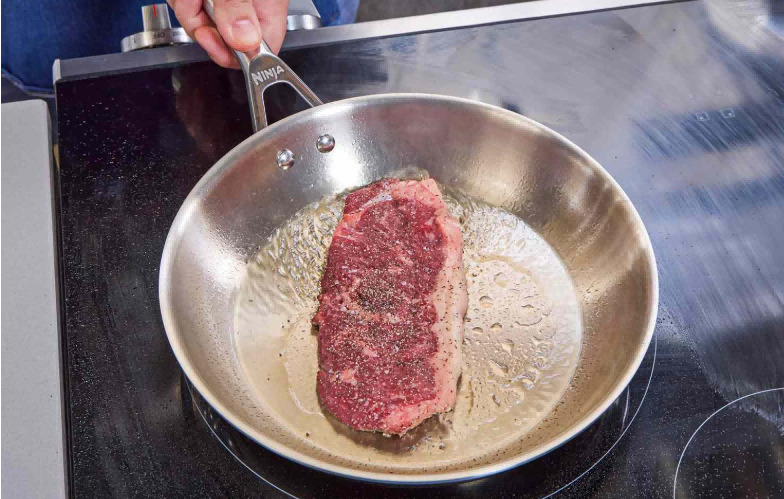
Stir-frying vegetables
High-water vegetables such as mushrooms and greens need to be quickly stir-fried at high temperature, and make sure that the amount of oil in the pan is moderate to avoid water coming out and causing the bottom of the pan to drop in temperature.
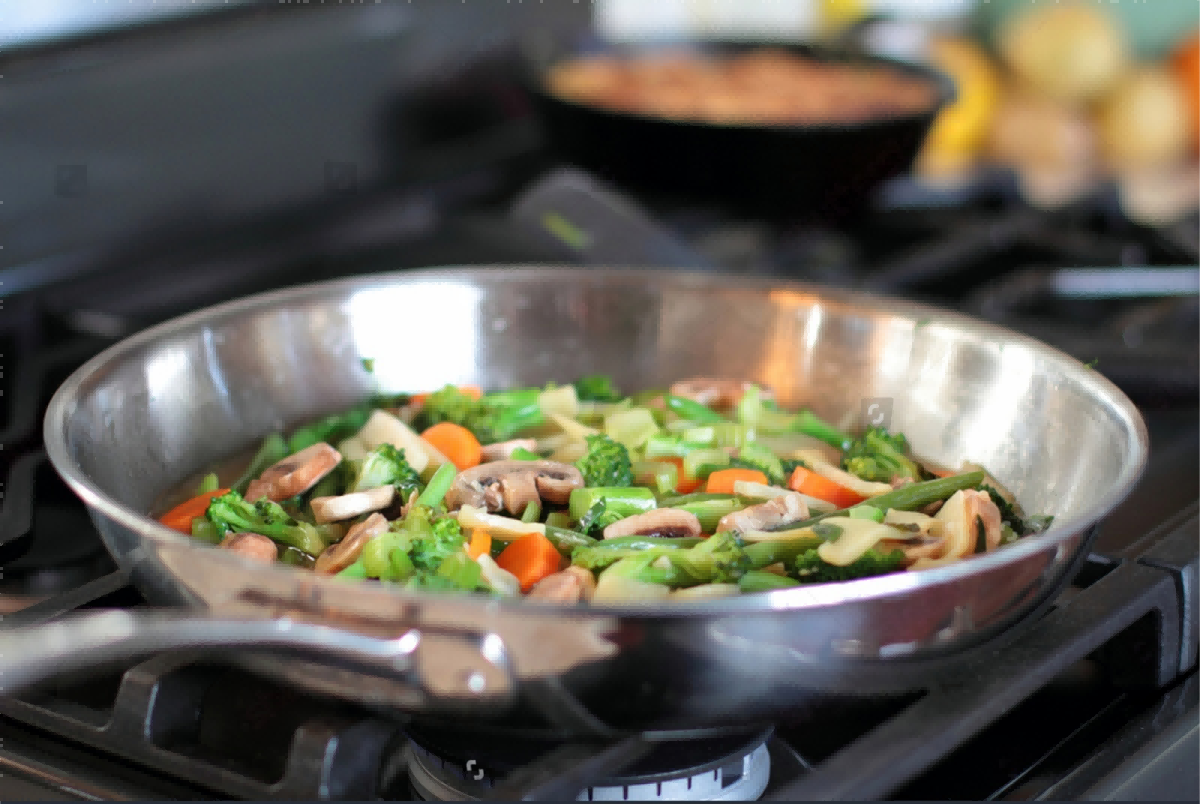
How To Clean Stainless Steel Cookware
Even if you have the right usage skills, it is still very important to clean and maintain the pot after cooking.
Remove sticky marks
Dip the bottom of stainless steel pan in warm water several minutes to soften the attachment thereof, then wipe it out with a sponge.
Sprinkle baking soda or add vinegar solution if there are stubborn attachments and gently wipe them out to make them gleaming again.
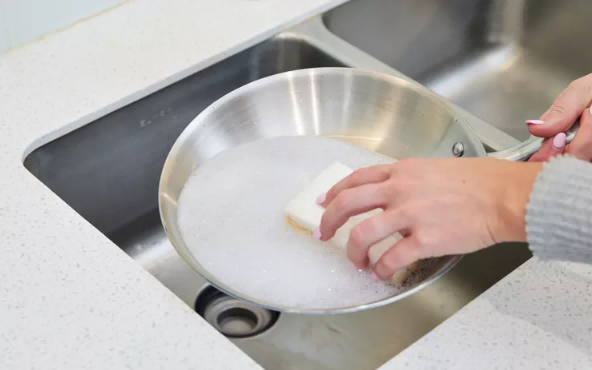
Avoid excessive scratching
Avoid using rough tools such as metal steel wool, and use a soft sponge or a special stainless steel cleaning cloth to avoid damaging the surface.
Polish regularly
Use a professional stainless steel polish to remove scratches and stains on the surface of the pan, keeping the pan looking shiny and new.
Summary
The use of stainless steel pots is not as simple as non-stick pots, but they have superior durability and safety. As long as you master the correct methods and techniques, you can easily avoid the problem of sticking and enjoy the healthy cooking experience it brings.
Key points review:
- Preheat the pot and control the appropriate temperature.
- Use appropriate amount of oil to fully cover the bottom of the pot.
- Pay attention to the timing when adding ingredients and do not stir frequently.
After mastering these basic techniques, you can not only solve the problem of sticking pans, but also maximize the superior performance of stainless steel pans and make healthy and delicious dishes!